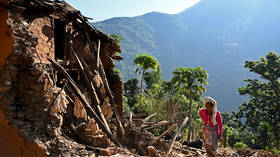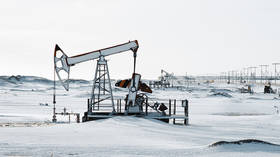Biofuel: India is getting ready to ‘feed’ more and more cars, but how will it feed its people?
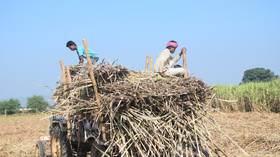
In line with its target of net-zero emissions by 2070, India is ramping up its reliance on biofuels so that it can increasingly phase down fossil fuels. Ethanol blending has increased eightfold in the past decade, from 1.53% (of total petrol) in 2014 to around 11.5% in March 2023, under the Ethanol Blended Petrol (EBP) Program.
Additionally, India has advanced the target for 20% ethanol blending from 2030 to 2025. (Ethanol is ethyl alcohol, derived as a by-product when sugar is processed from sugarcane.) The country has also launched the world’s first prototype of the BS 6 Stage II Electrified Flex Fuel Vehicle, a car developed by Toyota Motors that is capable of using ethanol blends beyond 20%.
Ethanol blending is also important in reducing reliance on oil imports and in saving foreign exchange. As per data shared in Parliament at the end of last year by Rameshwar Teli of the Ministry of Petroleum and Natural Gas, Public Sector Oil Marketing Companies (OMCs) saved approximately 5.09 billion liters of petrol on account of ethanol blending during the Ethanol Supply Year (ESY) 2022-23, saving more than Rs 243 billion ($2.9 billion) in foreign exchange.
According to minister for road transport and highways, Nitin Gadkari, ethanol being an indigenous, eco-friendly, and renewable fuel holds promise for India and aligns with the objectives of attaining energy self-sufficiency while positively impacting the environment.
“The move will also double farmers’ income, transitioning them to ‘Urjadata’ (energy givers) while continuing to support them as ‘Annadata’ (food givers),” he said.
While the 2018 policy on ethanol production emphasized biofuels from non-food biomass like bagasse, farm and forestry residue, and items like straw from rice, wheat and corn, the latest policy is a deviation. A 2021 Niti Aayog report renewed the focus on first-generation biofuels that rely on food-based feedstocks.
But in a country that ranked 111 among 123 countries on the 2023 Global Hunger Index (GHI) with a score of 28, indicating that India’s hunger problem was ‘serious’, the production of ethanol from rice, corn and sugar can impact the nation’s food security further.
In 2021, the government of India allocated about 78,000 tons of rice from Food Corporation of India (FCI) stocks at subsidized rates to distilleries for ethanol production; that stock could otherwise have been distributed to the economically weak under existing government schemes. In September 2022, India even banned the export of broken rice in support of the ethanol-blending program.
“Using food grain for ethanol production is not sustainable because right now we are using surplus food grain so we may not see the impact right away, but due to climate change all kinds of yields of food crops are falling,” says Ramya Natarajan of the Center for Study of Science, Technology and Policy (CSTEP), a research-based think tank.
Independent agriculture expert and food policy analyst Devinder Sharma also questions the validity and need when India lags behind in food security.
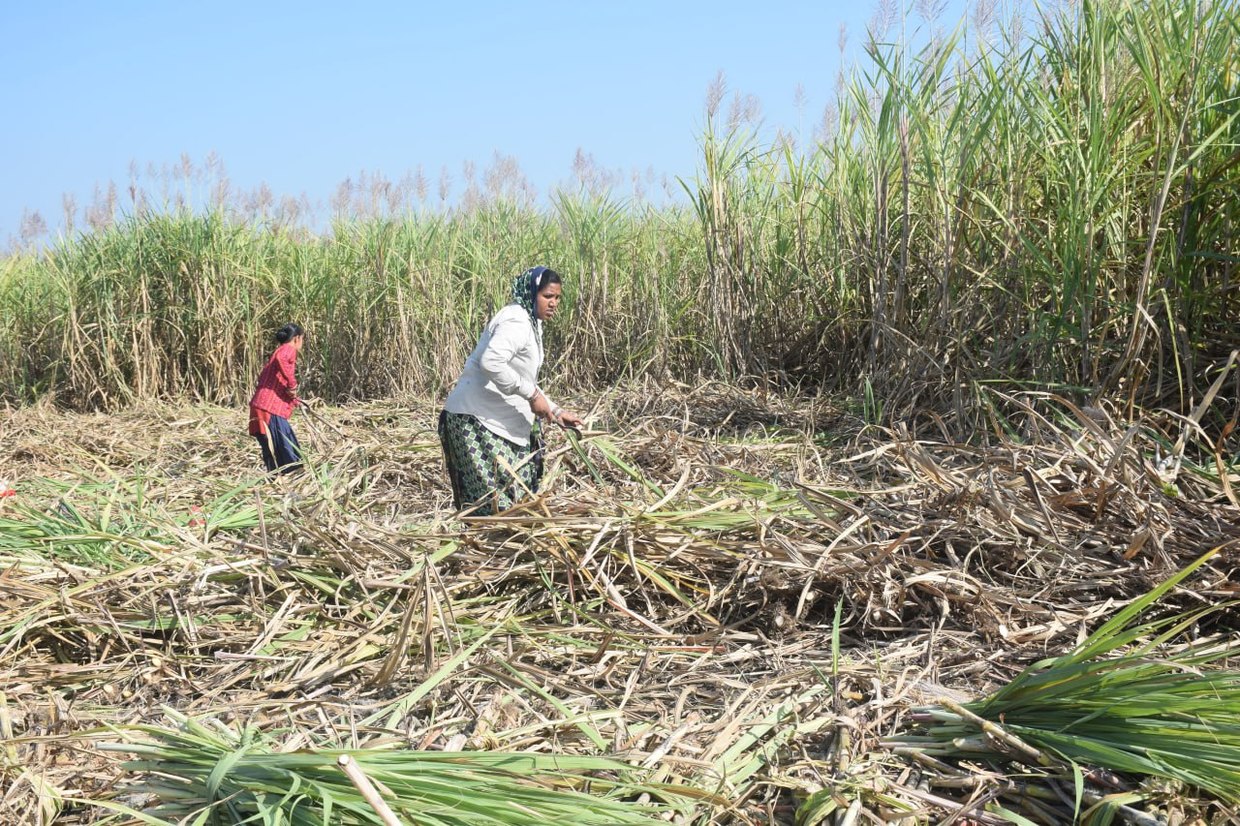
“Divesting food grain for biofuels is a flawed concept,” he says. “We are being driven by commercial interest which will create unfair competition between people and automobiles. As a country that lags behind on GHI I cannot understand how policymakers could even think of diverting food grain for ethanol production.”
For biofuels Sharma suggests using biomass waste, which otherwise causes air pollution in India’s northern states.
“Punjab alone produces over 20 million tons of rice stubble every year which can be used for biofuel production, along with corn stubble. Stubble burning is a big problem in winters so why not use this resource for producing biofuels?” he asks.
While official statistics say over 3.3 million children were malnourished in 2021, the government in a statement called the food vs fuel debate “unfounded, malicious and bereft of facts,” saying that meeting food grain demand for human and cattle consumption will always remain its top priority.
“It is important to understand that for a young country like India, while meeting food requirements are of paramount importance, fulfilling the energy needs… is also significant. Thus, the perspective should be ‘Food with Fuel’ and not ‘Food versus Fuel’,” read the statement.
Citing the USA’s example, Sharma says that around 44% of its domestic corn production is diverted, the largest in the world, yet it is still a problem as the land-use change (to grow more corn) leads to increased emissions, deforestation and biodiversity loss.
“Farmers will sell their produce to whoever gives them a higher price,” he says. “This model failed in the US in the 80s, so why are we going the same way?”
Natarajan expresses further concern over the launch of BS 6 Stage II vehicles that can use over 20% ethanol blend.
“It would be better to stop with 10% ethanol blend (E10) as that is what existing vehicles can tolerate,” she says. “We cannot force everyone to buy the new BS 6 Stage II vehicles. Suppose we do and are then unable to keep up ethanol production to sustain E20, what will we do then? It will defeat the whole purpose of the policy to attain energy security.”
She says that sticking with E10 will align with the current capabilities of vehicles, ensuring a seamless transition without the need for modification.
Water scarcity due to sugarcane cultivation for ethanol
Natarajan adds that E10 is a smart way to meet energy needs sustainably, with the current 5 million hectares of sugarcane cultivation until 2050 without needing to increase the sugarcane cultivation area or diverting food grains. This will also avoid conflict over land use.
To achieve E20 by 2025, India will have to more than double its production of ethanol from current 5.02 billion liters to 10.160 billion liters over the next two years, which could mean diverting more sugar and food grain to distilleries. From 0.337 million metric tons (MT) of sugar diverted for ethanol production in 2018, India diverted 3.6 million MT for ethanol in 2021-2022, aiming to divert 4.5-5.0 million MT of excess sugar in 2022-23 and around 6 million MT to ethanol by 2025.
With climate change affecting the sugarcane yields in almost all sugarcane growing states, either due to floods or drought, the area under sugarcane cultivation will need to be increased to support E20 blend, which might exacerbate farmers’ problems, especially in Uttar Pradesh (UP), Maharashtra and Karnataka – the largest sugarcane cultivation states in India.
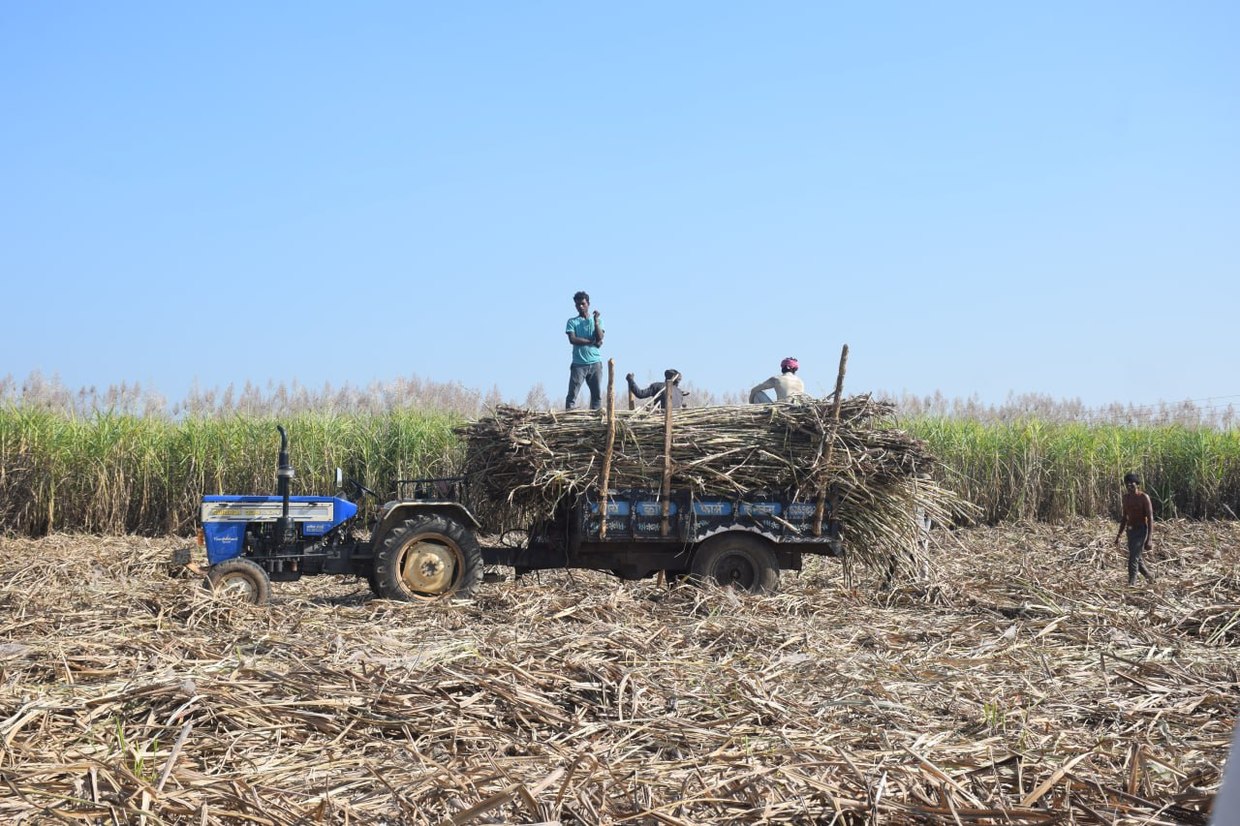
These states are already witnessing an increase in the area under sugarcane cultivation. In UP it rose from 2.23 million hectares in 2017-18 to 2.73 million hectares in 2022-23, while in Maharashtra it went up from 0.9 million hectares to 1.36 million hectares in the last six years; in Karnataka it grew from 0.3 million hectares to 0.7 million hectares for the same period.
“Given the fact that in 2023, due to monsoon irregularities production of sugarcane suffered and the government banned the use of sugar syrup for ethanol production, E20 might not be sustainable for India and achieving 20% blend will require an increase in sugarcane cultivation for which we will need a lot of ground water,” she adds.
With over 118 sugar mills and around 2.736 million hectares under sugarcane cultivation and over 85 operational distilleries, UP became the highest producer of ethanol in 2023. On average, 1kg of sugar requires about 1,500–2,000kg of water but the state government is yet to develop policies to prevent future water scarcity.
V K Shukla, additional cane commissioner of the UP government, says that the farmers in four drier districts like Shamli, Baghpat, Meerut and Bulandshahr face water scarcity that affects the produce. Yet the state has not formulated any policy for them.
“The situation of UP is not like that of Maharashtra where there is acute water scarcity. We get good rainfall and since there is less need for irrigation during the three winter months, farmers only need to irrigate for five months,” he says. “We encourage farmers to use drip irrigation. We do not need to worry about water scarcity for growing sugarcane in UP but it would be great if we could come up with some policies to reuse water from sugar mills and distilleries after producing ethanol.”
On these concerns Dr Virendra Singh, director of UP’s directorate of sugarcane development, says, “The area under sugarcane cultivation is designated and though we have no plans to increase it yet, if the installed capacity for ethanol production increases, we might have to think about it. Right now, we are working to increase the land’s productivity to increase the yield in the same area.”
The drought-like conditions prevalent in the sugarcane growing districts of Maharashtra will worsen the already-scarce ground water if the area increases any further. According to 2020 data by Vasantdada Sugar Institute in Pune, 0.9 million hectares under sugarcane cultivation required around 25,000 cubic meters per hectare of water, amounting to around 24 billion cubic meters (BMC) per year, a very large quantity for a water-scarce state.
K J Joy, Senior Fellow with Society for Promoting Participative Ecosystem Management (SOPPECOM), Pune, says that in Maharashtra, more than land it is water that’s the main constraint.
“Despite the fact that Maharashtra has the highest number of major and medium dams, it has only about 17-18% cropped area that is irrigated, far less than the all-India average. Sugarcane is seen as the villain in this scenario,” he says.
Joy cites options like drip irrigation and Sustainable Sugar Initiative (SSI) to increase productivity without expanding the cultivated area, and to cut down the water requirement to one-third of the present use. Also, increasing fuel efficiency will reduce demand so that we do not have to face a scenario of food vs fuel.
“We need to look at the options for reducing transportation and for more fuel efficiency to reduce demand,” he says. “Transportation is the single largest user of petroleum products and India is the third-largest user of transport automobiles in the world. One of the low-hanging fruit in terms of reducing consumption is to go for fuel efficiency measures.”

